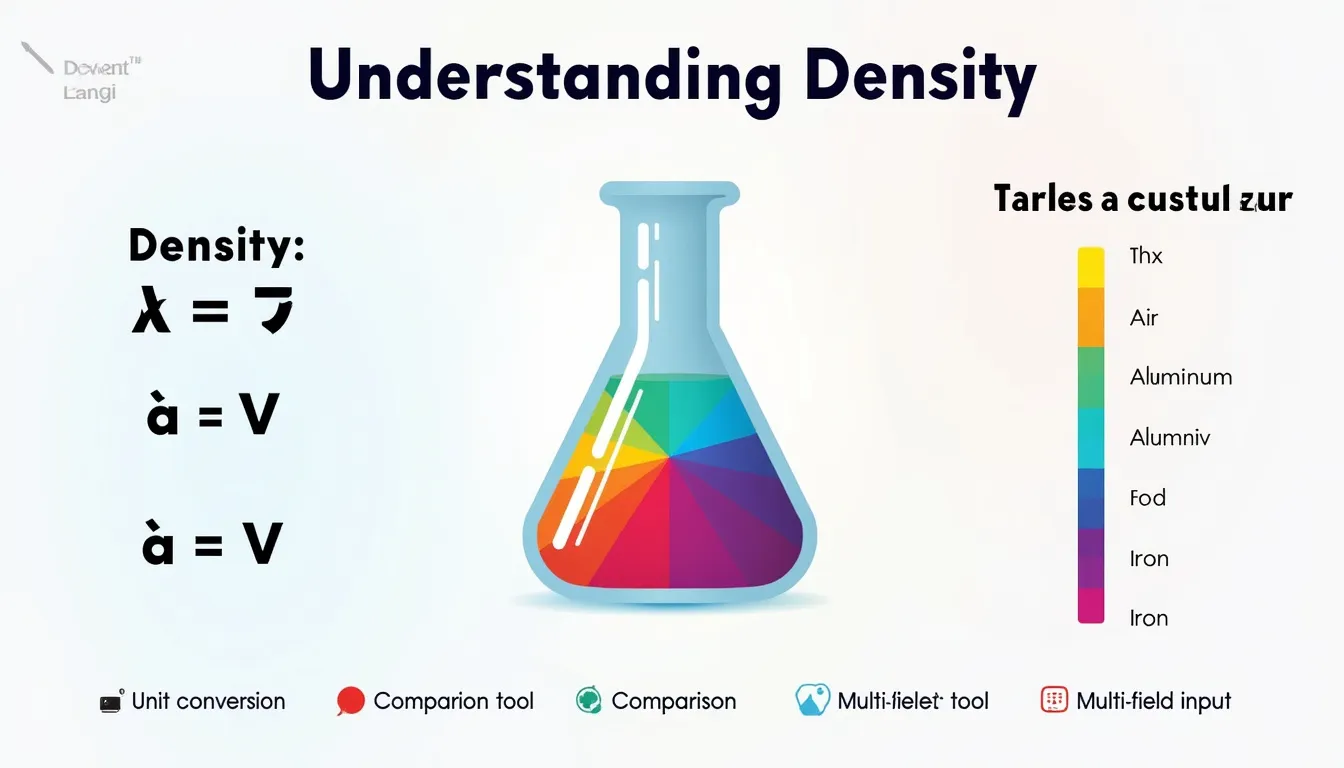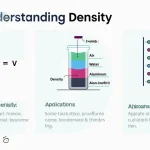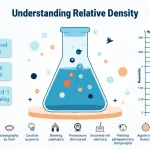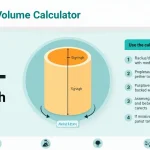Is this tool helpful?
How to use the tool
1 – Enter mass
- Example A: 3.5 kg (weight of a bowling ball)
- Example B: 220 g (weight of a coffee mug)
2 – Enter volume
- Example A: 0.002 m³ (≈ 2 L)
- Example B: 250 mL (quarter-liter beaker)
3 – Pick result unit (optional)
Choose kg/m³, g/cm³, lb/ft³, or g/mL; default is kg/m³.
4 – Click “Calculate Density”
The tool converts units automatically and shows the density plus a quick material comparison.
Underlying formula
All results derive from:
$$\rho = rac{m}{V}$$
Example calculations
- Bowling ball: 3.5 kg / 0.002 m³ = 1750 kg/m³ (denser than water).
- Coffee mug: 0.22 kg / 0.00025 m³ = 880 kg/m³ = 0.88 g/cm³ (floats on water).
Quick-Facts
- Water density: 1 000 kg/m³ at 4 °C (CRC Handbook, 2021).
- Air density: 1.225 kg/m³ at sea level, 15 °C (NOAA, 2020).
- Steel range: 7 700-8 050 kg/m³ (ASM Handbook, 2015).
- ISO 80000-4 defines ρ = m/V as the standard density equation (ISO, 2019).
FAQ
What is density?
Density measures mass per unit volume, expressed in kg/m³ or g/cm³ (ISO 80000-4, 2019).
How does the calculator handle unit conversion?
It multiplies each input by a fixed factor—e.g., 1 L → 0.001 m³—before applying ρ = m/V.
Why does density vary with temperature?
Heating expands most materials, raising volume and lowering density (NIST Thermophysics Database, 2022).
Which everyday substances float on water?
Cooking oil (~0.92 g/cm³) and pine wood (~0.5 g/cm³) are less dense than water (USDA Wood Handbook, 2010).
How accurate should my inputs be?
Use a scale with ±0.1 g resolution and a Class A volumetric flask for ±0.05 mL accuracy (Ohaus Datasheet, 2021).
Can the tool calculate specific gravity?
Yes—divide your density result by water’s density at the same temperature; the ratio is dimensionless.
Is density the same as mass?
No; mass measures quantity of matter, while density relates that mass to the space it occupies (Halliday & Resnick, 2013).
How can I verify results?
Compare with published material tables; steel ~7.8 g/cm³, aluminum ~2.7 g/cm³ (ASM Handbook, 2015).
Important Disclaimer
The calculations, results, and content provided by our tools are not guaranteed to be accurate, complete, or reliable. Users are responsible for verifying and interpreting the results. Our content and tools may contain errors, biases, or inconsistencies. Do not enter personal data, sensitive information, or personally identifiable information in our web forms or tools. Such data entry violates our terms of service and may result in unauthorized disclosure to third parties. We reserve the right to save inputs and outputs from our tools for the purposes of error debugging, bias identification, and performance improvement. External companies providing AI models used in our tools may also save and process data in accordance with their own policies. By using our tools, you consent to this data collection and processing. We reserve the right to limit the usage of our tools based on current usability factors.







